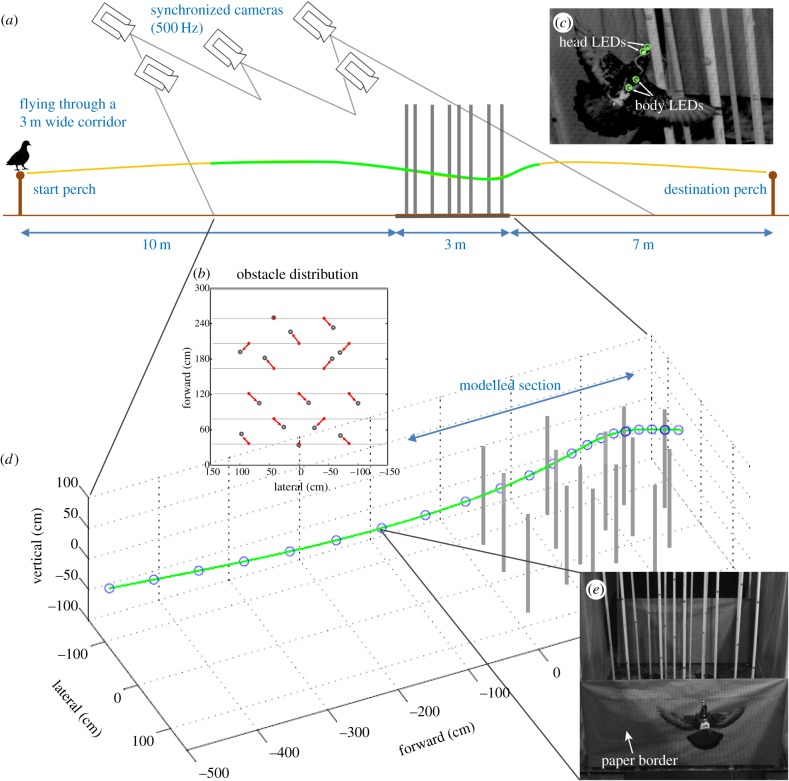Figure 1.
Obstacle avoidance flight corridor and motion tracking. (a) Pigeons were trained to fly between two perches located at either end of a 20 m indoor flight corridor. An obstacle ‘pole forest’ was erected 10 m from the take-off perch to elicit obstacle negotiation. Five high-speed cameras captured the flight trajectories (green section) throughout the entire obstacle forest, including 5 m of the approach. (b) Starting from a standard grid (red dots), for each flight obstacles were randomly assigned one of five positions (the grid centre) or one of four orthogonal locations 25 cm from the grid centre (illustrated by red arrows). (c) Four 2.4 mm LEDs were attached to each pigeon in combination with a small battery-pack (16.5 g total) to facilitate positional tracking of the head and body. (d) Three-dimensional flight trajectories were reconstructed from the high-speed videos. An example trajectory (green trace) is marked every 200 ms (blue circles). To model steering through the obstacle field, we considered a section of the flight from 50 cm in front of the obstacle field to 20 cm before the pigeon left the obstacle field (blue arrow). (e) Three-dimensional head positions and pole distributions were used to reconstruct the in-flight visual motion of obstacles with respect to the pigeon's head (and eyes). The modelling process assumed that pigeons always aimed towards visual centres of gaps.

